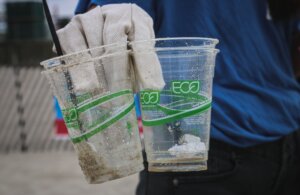A smartphone weighs less than 200 grams and comes in a small package, but an unbelievable 86 kilograms of waste are produced during its manufacture. (Credit: Анатолий Стафичук / Pixabay)
"The waste we deal with as consumers is a tiny percentage of the overall waste — only about 2 to 3% of it," said Josh Lepawsky, professor of geography at the Memorial University of Newfoundland in St. John's, Canada. According to an article on dw.com, the bulk of the world’s waste is hidden in the difficult-to-trace processes of resource extraction, manufacturing, transportation and electricity production.
A study by Swedish waste management and recycling association Avfall Sverige calculated the invisible waste generated for a typical smartphone and 3-kilogram laptop to be about 86 and 1,200 kilograms respectively. "That [figure] includes stones, gravel, tailings and slag," said Anna Carin Gripwall, co-author of the study. "It's also the fuel and electricity used — but that is a very small amount compared to the mining waste." This far outweighs other products surveyed, including 1 kilogram of beef and a pair of cotton trousers, which generate 4 and 25 kilograms respectively.
Invisible waste smartphone










